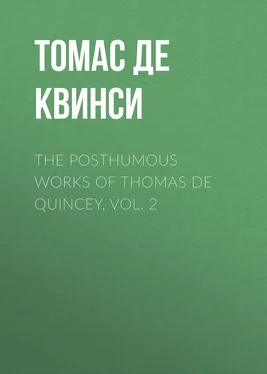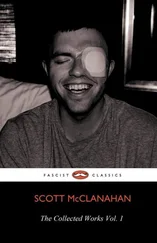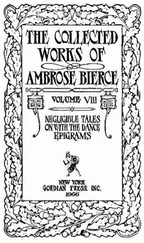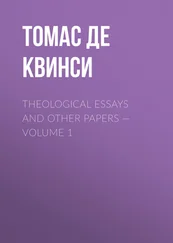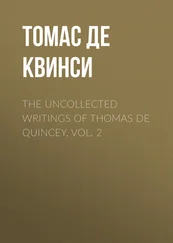Томас Де Квинси - The Posthumous Works of Thomas De Quincey, Vol. 2
Здесь есть возможность читать онлайн «Томас Де Квинси - The Posthumous Works of Thomas De Quincey, Vol. 2» — ознакомительный отрывок электронной книги совершенно бесплатно, а после прочтения отрывка купить полную версию. В некоторых случаях можно слушать аудио, скачать через торрент в формате fb2 и присутствует краткое содержание. Жанр: foreign_prose, literature_19, foreign_antique, на английском языке. Описание произведения, (предисловие) а так же отзывы посетителей доступны на портале библиотеки ЛибКат.
- Название:The Posthumous Works of Thomas De Quincey, Vol. 2
- Автор:
- Жанр:
- Год:неизвестен
- ISBN:нет данных
- Рейтинг книги:3 / 5. Голосов: 1
-
Избранное:Добавить в избранное
- Отзывы:
-
Ваша оценка:
- 60
- 1
- 2
- 3
- 4
- 5
The Posthumous Works of Thomas De Quincey, Vol. 2: краткое содержание, описание и аннотация
Предлагаем к чтению аннотацию, описание, краткое содержание или предисловие (зависит от того, что написал сам автор книги «The Posthumous Works of Thomas De Quincey, Vol. 2»). Если вы не нашли необходимую информацию о книге — напишите в комментариях, мы постараемся отыскать её.
The Posthumous Works of Thomas De Quincey, Vol. 2 — читать онлайн ознакомительный отрывок
Ниже представлен текст книги, разбитый по страницам. Система сохранения места последней прочитанной страницы, позволяет с удобством читать онлайн бесплатно книгу «The Posthumous Works of Thomas De Quincey, Vol. 2», без необходимости каждый раз заново искать на чём Вы остановились. Поставьте закладку, и сможете в любой момент перейти на страницу, на которой закончили чтение.
Интервал:
Закладка:
Well, but this (you say) is a digression. Why, true; and a digression is often the cream of an article. However, as you dislike it, let us re gress as fast as possible, and scuttle back from the occult art of boiling potatoes to the much more familiar one of painting in oil. Did Coleridge really understand this art? Was he a sciolist, was he a pretender, or did he really judge of it from a station of heaven-inspired knowledge? A hypocrite Coleridge never was upon any subject; he never affected to know when secretly he felt himself ignorant. And yet, of the topics on which he was wont eloquently to hold forth, there was none on which he was less satisfactory—none on which he was more acute, yet none on which he was more prone to excite contradiction and irritation, if that had been allowed.
Here, for example, is a passage from one of his lectures on art:
'It is sufficient that philosophically we understand that in all imitations two elements must coexist, and not only coexist, but must be perceived as existing. Those two constituent elements are likeness and unlikeness, or sameness and difference, and in all genuine creations of art there must be a union of these disparates. The artist may take this point of view where he pleases, provided that the desired effect be perceptibly produced, that there be likeness in the difference, difference in the likeness, and a reconcilement of both in one. If there be likeness to nature without any check of difference, the result is disgusting, and the more complete the delusion the more loathsome the effect. Why are such simulations of nature as wax-work figures of men and women so disagreeable? Because, not finding the motion and the life all we expected, we are shocked as by a falsehood, every circumstance of detail, which before induced you to be interested, making the distance from truth more palpable. You set out with a supposed reality, and are disappointed and disgusted with the deception; whilst in respect to a work of genuine imitation you begin with an acknowledged total difference, and then every touch of nature gives you the pleasure of an approximation to truth.'
In this exposition there must be some oversight on the part of Coleridge. He tells us in the beginning that, if there be 'likeness to nature without any check of difference, the result is disgusting.' But the case of the wax-work, which is meant to illustrate this proposition, does not at all conform to the conditions; the result is disgusting certainly, but not from any want of difference to control the sameness, for, on the contrary, the difference is confessedly too revolting; and apparently the distinction between the two cases described is simply this—that in the illegitimate case of the wax-work the likeness comes first and the unlikeness last, whereas in the other case this order is reversed. But that distinction will neither account in fact for the difference of effect; nor, if it did , would it account upon any reason or ground suggested by Coleridge for such a difference. Let us consider this case of wax-work a little more vigilantly, and then perhaps we may find out both why it is that some men unaffectedly are disgusted by wax-work; and secondly, why it is that, if trained on just principles of reflective taste, all men would be so affected.
As a matter not altogether without importance, we may note that even the frailty of the material operates to some extent in disgusting us with wax-work. A higher temperature of the atmosphere, it strikes us too forcibly, would dispose the waxen figures to melt; and in colder seasons the horny fist of a jolly boatswain would 'pun 5 5 ' Pun them into shivers ': Troilus and Cressida, Act II., Sc. 1. We refer specially to the jolly boatswain, having already noticed the fact, that sailors as a class, from retaining more of the simplicity and quick susceptibility belonging to childhood, are unusually fond of waxen exhibitions. Too much worldly experience indisposes men to the playfulness and to the toyfulness (if we may invent that word) of childhood, not less through the ungenial churlishness which it gradually deposits, than through the expansion of understanding which it promotes.
them into shivers' like so many ship-biscuits. The grandeur of permanence and durability transfers itself or its expression from the material to the impression of the artifice which moulds it, and crystallizes itself in the effect. We see continually very ingenious imitations of objects cut out in paper filigree; there have been people who showed as much of an artist's eye in this sort of work, and of an artist's hand, as Miss Linwood of the last generation in her exquisite needlework; in both cases a trick, a tour-de-main , was raised into the dignity of a fine art; and yet, because the slightness of the material too emphatically proclaims the essential perishableness of the result, nobody views such modes of art with more even of a momentary interest than the morning wreaths of smoke ascending so beautifully from a cottage chimney, or cares much to preserve them. The traceries of hoar frost upon the windows of inhabited rooms are not only beautiful in the highest degree, but have been shown in several French memoirs to obey laws of transcendental geometry, and also to obey physical laws of startling intricacy. These lovely forms of almighty nature wear the grandeur of mystery, of floral beauty, and of science (immanent science) not always fathomable. 6 6 ' Science not always fathomable. ' Several distinguished Frenchmen have pursued a course of investigations into these fenestral phenomena, which one might call the Fata Morgana of Frost ; and, amongst these investigators, some—not content with watching, observing, recording—have experimented on these floral prolusions of nature by arranging beforehand the circumstances and conditions into which and under which the Frost Fairy should be allowed to play. But what was the result? Did they catch the Fairy? Did they chase her into her secret cells and workshops? Did they throw over the freedom of her motions a harness of net-work of coercion as the Pagans over their pitiful Proteus? So far from it, that the more they studied the less they understood; and all the traps which they laid for the Fairy, did but multiply her evasions.
They are anything but capricious. Solomon in all his glory was not arrayed like them ; and yet, simply because the sad hand of mortality is upon them, because they are dedicated to death, because on genial days they will have passed into the oblivion of graves before the morning sun has mounted to his meridian, we do not so much as honour them with a transient stare from the breakfast-table. Ah, wretches that we are, the horrid carnalities of tea and toast, or else the horrid bestialities in morning journals of Chartists and Cobdenites at home, of Red Ruffians abroad, draw off our attention from the chonchoids and the cycloids pencilled by the Eternal Geometrician! and these celestial traceries of the dawn, which neither Da Vinci nor Raphaello was able to have followed as a mimic, far less as a rival, we regard as a nuisance claiming the attentions of the window-cleaner; even as the spider's web, that might absorb an angel into reverie, is honoured amongst the things banned by the housemaid. But the reason why the wax-work disgusts is that it seeks to reproduce in literal detail the traits that should be softened under a general diffusive impression; the likeness to nature is presented in what is essentially fleeting and subsidiary, and the 'check of difference' is found also in this very literality, and not in any effort of the etherealizing imagination, as it is in all true works of art; so that the case really stands the exact opposite of that which Coleridge had given in his definition. 7 7 The passage occurs at p. 354, vol. ii. of the Lectures ; and we now find, on looking to the place, that the illustration is drawn from 'a dell of lazy Sicily.' The same remark has virtually been anticipated at p. 181 of the same volume in the rule about 'converting mere abstractions into persons.'
Интервал:
Закладка:
Похожие книги на «The Posthumous Works of Thomas De Quincey, Vol. 2»
Представляем Вашему вниманию похожие книги на «The Posthumous Works of Thomas De Quincey, Vol. 2» списком для выбора. Мы отобрали схожую по названию и смыслу литературу в надежде предоставить читателям больше вариантов отыскать новые, интересные, ещё непрочитанные произведения.
Обсуждение, отзывы о книге «The Posthumous Works of Thomas De Quincey, Vol. 2» и просто собственные мнения читателей. Оставьте ваши комментарии, напишите, что Вы думаете о произведении, его смысле или главных героях. Укажите что конкретно понравилось, а что нет, и почему Вы так считаете.
